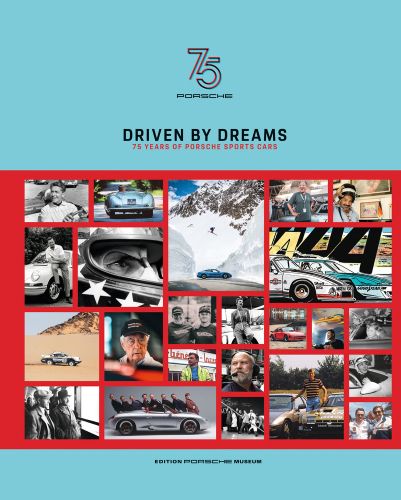
The inspiration for the major Apple TV+ series, streaming now!
The riveting history of the American Eighth Air Force in World War II and the young men who flew the bombers that helped beat the Nazis and liberate Europe, brilliantly told by historian and World War II expert Donald L. Miller. The Masters of the Air streaming series stars Austin Butler and Callum Turner, and is produced by Tom Hanks and Steven Spielberg, the legendary duo behind Band of Brothers and The Pacific.
Masters of the Air is the deeply personal story of the American bomber boys in World War II who brought the war to Hitler’s doorstep. With the narrative power of fiction, Donald Miller takes you on a harrowing ride through the fire-filled skies over Berlin, Hanover, and Dresden and describes the terrible cost of bombing for the German people. Masters of the Air is the deeply personal story of the American bomber boys in World War II who brought the war to Hitler’s doorstep. With the narrative power of fiction, Donald Miller takes you on a harrowing ride through the fire-filled skies over Berlin, Hanover, and Dresden and describes the terrible cost of bombing for the German people.
Fighting at 25,000 feet in thin, freezing air that no warriors had ever encountered before, bomber crews battled new kinds of assaults on body and mind. Air combat was deadly but intermittent: periods of inactivity and anxiety were followed by short bursts of fire and fear. Unlike infantrymen, bomber boys slept on clean sheets, drank beer in local pubs, and danced to the swing music of Glenn Miller’s Air Force band, which toured US air bases in England. But they had a much greater chance of dying than ground soldiers.
The bomber crews were an elite group of warriors who were a microcosm of America—white America, anyway. The actor Jimmy Stewart was a bomber boy, and so was the “King of Hollywood,” Clark Gable. And the air war was filmed by Oscar-winning director William Wyler and covered by reporters like Andy Rooney and Walter Cronkite, all of whom flew combat missions with the men. The Anglo-American bombing campaign against Nazi Germany was the longest military campaign of World War II, a war within a war. Until Allied soldiers crossed into Germany in the final months of the war, it was the only battle fought inside the German homeland.
Masters of the Air is “a stunning achievement” (David McCullough), “a fresh new account” (Walter Boyne, former director of the Smithsonian Air and Space Museum) of life in wartime England and in the German prison camps, where tens of thousands of airmen spent part of the war. It ends with a vivid description of the grisly hunger marches captured airmen were forced to make near the end of the war through the country their bombs destroyed.
Drawn from recent interviews, oral histories, and American, British, German, and other archives, Masters of the Air is an authoritative, deeply moving account that “accurately and comprehensively” (Lt. Gen. Bernard E. Trainor, USMC (Ret.) and coauthor of Cobra II) tells of the world’s first and only bomber war.

• Beautiful photographs portray the stunning coastal roads of Germany
• A new addition to a highly successful series
• Perfect tips for routes and sightseeing
You do not need to go to California for scenic coastal roads or relaxed cruising – not when you have that right on your doorstep in Europe. Instead of chewing gum, eating burgers and drinking Coca-Cola, your traveling companions will experience liquorice, tea and shrimp rolls – and, of course, Porsche. In the latest Curves volume, Stefan Bogner travels the German coastline from von Emden to Hamburg, visits the North Frisian island Sylt, and takes a trip to Denmark. From Klitmoeller he goes to Copenhagen and Lübeck. The journey comes to an end in between seaside resorts and chalk cliffs on Rügen, an island in the Baltic. Text in English and German.
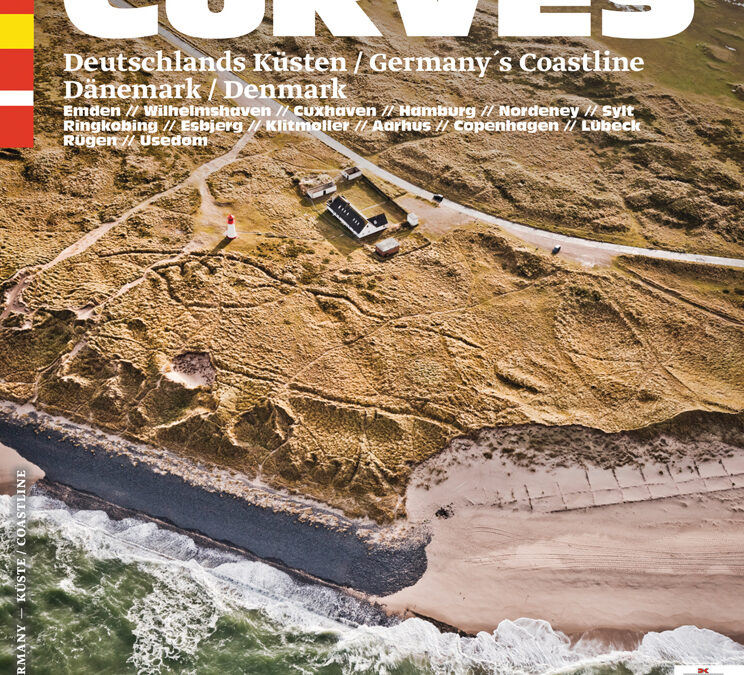
You do not need to go to California for scenic coastal roads or relaxed cruising – not when you have that right on your doorstep in Europe. Instead of chewing gum, eating burgers and drinking Coca-Cola, your travelling companions will experience liquorice, tea and shrimp rolls – and, of course, Porsche.
In the latest Curves volume, Stefan Bogner travels the German coastline from von Emden to Hamburg, visits the North Frisian island Sylt, and takes a trip to Denmark. From Klitmoeller he goes to Copenhagen and Lübeck. The journey comes to an end in between seaside resorts and chalk cliffs on Rügen, an island in the Baltic.
Text in English and German.

Although one of the Luftwaffe’s lesser-known front line aircraft, the Dornier Do 215, descended from the Dornier Do 17, saw service in a wide range of roles, including night fighter, reconnaissance and staff transport. In doing so it demonstrated remarkable flexibility for both the Luftwaffe and several foreign operators between 1939 and1944.
This new book describes the Do 215’s operations with the Luftwaffe’s secretive Aufkl rungsgruppe Ob.d.L., both in wartime operations in the West and in civil disguise in preparation for Operation Barbarossa in 1941 and during the invasion itself. It describes its lineage from the dedicated reconnaissance aircraft Do 17R, as well as the development of the Do 17 Z-7/Z-10 which preceded the Do 215 B-5 nightfighter, one of the first aircraft to employ radar and infrared sighting equipment. The Do 215 was also the chosen aircraft of several leading Luftwaffe commanders, including Josef Kammhuber, Albert Kesselring and Erhard Milch.
Following many years of extensive research the author describes the covert reconnaissance, night-fighter and staff transport service of the Do 215 and how the type was affected by the protracted development of the Dornier’s DB 600 and DB 601 powerplants. He also uncovers details of the export efforts made by Nazi Germany with Yugoslavia, Romania, Sweden, The Netherlands, the Soviet Union and other nations, as well as the late war Hungarian operation of the Do 215.
With hundreds of rare photographs, specially commissioned color artwork, technical and performance data, details on camouflage and markings, production and loss lists, Mikael Olrog presents a fascinating and revealing account of the often overlooked and misunderstood Dornier Do 215.
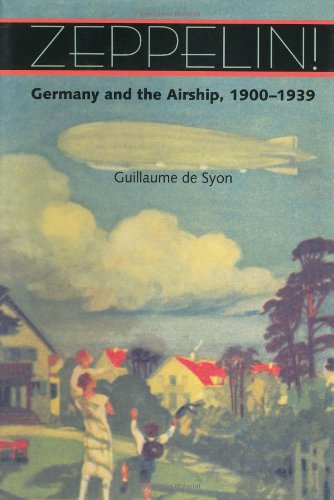
Whenever the airship flew over a village, or whenever she flew over a lonely field on which some peasants were working, a tremendous shout of joy rose up in the air towards Count Zeppelin’s miracle ship which, in the imagination of all who saw her, suggested some supernatural creature. As this paean to the Zeppelin from an early-20th-century issue of the German newspaper Thüringer Zeitung makes clear, the airship inspired a unique sense of awe. These phenomenal rigid, lighter-than-air craft―the invention of Ferdinand Graf von Zeppelin (1838-1917)―approached the size of a small village. Although they moved slowly, there was no mistaking their exciting―or ominous―potential. Friends of the machine believed that it would revolutionize commerce, carry scientists to otherwise inaccessible places, and deliver bombs with great accuracy. Before the airplane proved its reliability and superior practicality―and before the fiery crash of the Hindenburg in 1937―Zeppelins made a deep impression on the minds of Europeans, especially in Germany.
In Zeppelin! Guillaume de Syon offers a captivating history of this technological wonder, from development and production to its impact on German culture and society. De Syon chronicles the various ways in which the airships were used―transport, war, exploration, and propaganda―and details the attempts by successive German governments―autocratic, democratic, fascist― to co-opt Count Zeppelin’s invention. Between 1900 and 1939, Germans saw the Zeppelin as a symbol of national progress, and de Syon uses the airship to better understand the dynamics of German society and the place of technology within it. Though few people actually flew in any of the 119 Zeppelins built, the rigid airship made one of the strongest impressions of any flying machine on Europe’s collective memory. Six decades later, there is still a mystique surrounding these technological leviathans, one that Zeppelin! addresses with insight and wit.

In this, the first Haynes Manual about a Second World War warship, acclaimed maritime author and historian Angus Konstam gives readers a detailed insight into the design, fighting capability and short-lived career of Nazi Germany’s greatest warship. He tells the Bismarck’s story, from her origins in the aftermath of the Great War and the Versailles Treaty, including Germany’s capital ship building program, her design, building, launch and fitting out, to her sea trials and eventual commissioning into the Kriegsmarine.

DAVID MYHRA

The extraordinary Junkers Ju 287, the first truly swept-winged, jet-powered aircraft, took to the sky in August 1944, at a time when Germany was suffering sustained round-the-clock bombing by the Allied air forces. Despite such adverse development conditions, this large and futuristic aircraft represented a remarkable accomplishment in aeronautical design. It was a flying test bed built to develop the technology required for a multi-engined jet bomber aircraft and was powered by four Junkers Jumo 004 engines.Featuring a revolutionary swept forward wing and built largely from scavenged components from other aircraft, it was designed and came to fruition very quickly, using parts of a Heinkel He 177 and a Junkers Ju 88 bomber. The project was considered ‘top secret’ and evaded Allied intelligence for many months.This exciting new book is beautifully illustrated throughout with striking photographs, several of which are previously unpublished, and contains much new and revised information on the Ju 287. It is certain to become the definitive account of this remarkable aircraft. The authors also trace the development of forward swept-winged aircraft prior to its appearance, the aircraft’s subsequent history in the Soviet Union, its post-war influence on aircraft projects, and designs produced in Germany. A unique and compelling account for all aviation enthusiasts.
Car Lover’s Guide to S.Germany

The story of a boy with a big four-wheel dream
There are men who fall in love with a dream when they are young and do everything they can to make it come true. Romano Artioli is an entrepreneur pursuing his desire to revive the world’s most prestigious automobile brand, Bugatti. With passion and dedication, he achieves this goal. Born in Mantua, birthplace of Nuvolari, the most famous race car driver of all time, Romano opens his first auto service centre in Bolzano at the age of eighteen, buys a hydraulic test bench and begins overhauling engines, immediately demonstrating great skill.
And he founds dealerships, imports cars and becomes president of the local automobile club. He understands the importance of going all out to meet the demands of his customers, who become his friends and help him sell cars.
He convinces Enzo Ferrari to entrust him with management of the brand not only in the Triveneto, but in southern Germany as well.
After amassing experience for years travelling the world, it’s time for him to make his boyhood dream come true: he charms the French government and arranges for the sale of the Bugatti brand.
Then, having been abruptly prevented from selecting a powerful partner among the many who were interested in developing Bugatti and ensuring its future as an independent brand, he acquires the crisis-ridden Lotus Group and rapidly restores it to its former grandeur.
There, he introduces new models with great success, such as the special Lotus Elise, named after Romano’s young granddaughter.
Exploiting the unique untapped potential of his technicians, who work with passion and total commitment. In the mid-nineties, the Bugatti EB 112 is named “the world’s most beautiful sedan”.
But as in a classic thriller, just when everything seems to have turned out right comes the sneaky and unexpected twist that changes everything. With endless twists and turns and a long line of bankers’ traps, lawyers’ scams and ravenous businessmen, Bugatti & Lotus Thriller tells the story of a great dream of genius and creativity that stirs passion in every petrolhead the world over.
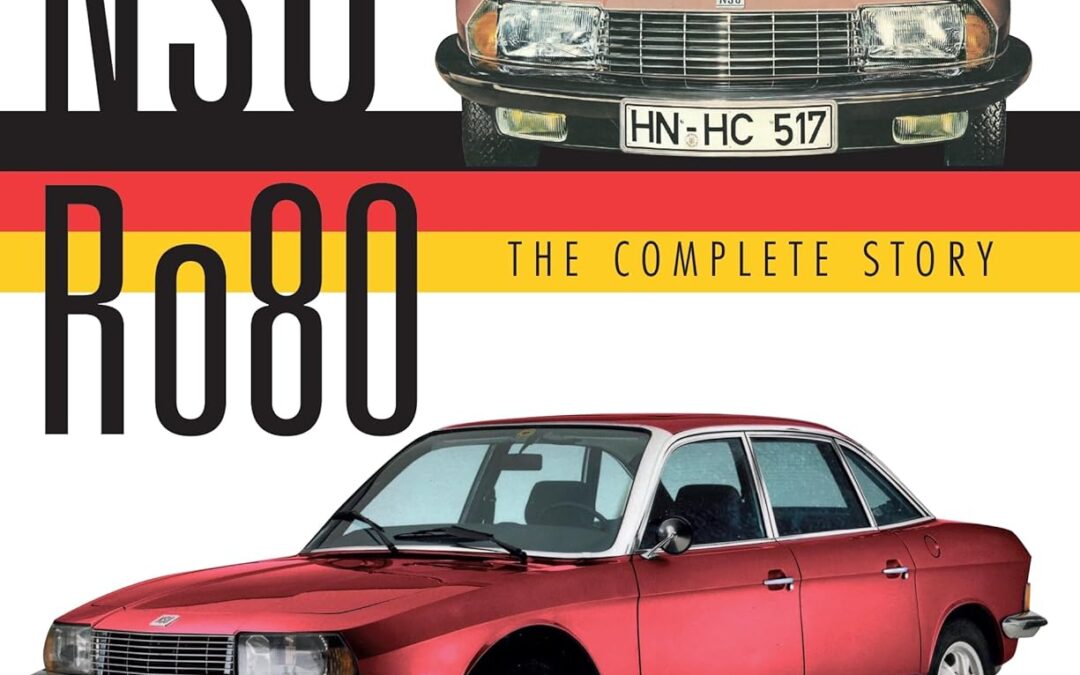
Launched in 1967, the NSU Ro80 had modern aerodynamic styling, a technologically advanced Wankel rotary engine and was voted Car of the Year in 1968. However, after the initial positive reception, the car developed a reputation for unreliability, with problems arising as early as 15,000 miles and many vehicles required a rebuilt engine before 30,000 miles. Despite the company resolving these reliability issues in both existing and new vehicles, and offering a generous warranty, the damage to the car’s reputation was done. The NSU Ro80 is the most celebrated motoring lost cause of the second half of the twentieth century, outranking the likes of the Edsel and the DeLorean because, unlike those statements of misplaced optimism and ego, it was a good car. Not just good: the NSU Ro80 is one of the great saloons. Launched in September 1967, the Ro80 was an all-new four-door five-seater from a West German company that – post-war – had never made anything other than economy runabouts, motorcycles and mopeds. That alone should have been enough of a risk, but this was also the world’s first purpose-built Wankel-engined family saloon. This compact, refined and elegantly simple power unit was the first really new concept in the realm of internal combustion engines to achieve mass production for ninety years. A car like the Ro80 could only really have come from Germany, where there was a passion for research and a pride in engineering not found elsewhere in Europe. With front-wheel drive, superb power steering and four-wheel disc brakes, the car had top handling and driver appeal. Quite simply, it was a masterpiece, considered by many to be the finest vehicle of its type in the world. But with one fatal flaw: its engine. With over 300 archive photographs, drawings and diagrams, this book tells the story of the NSU
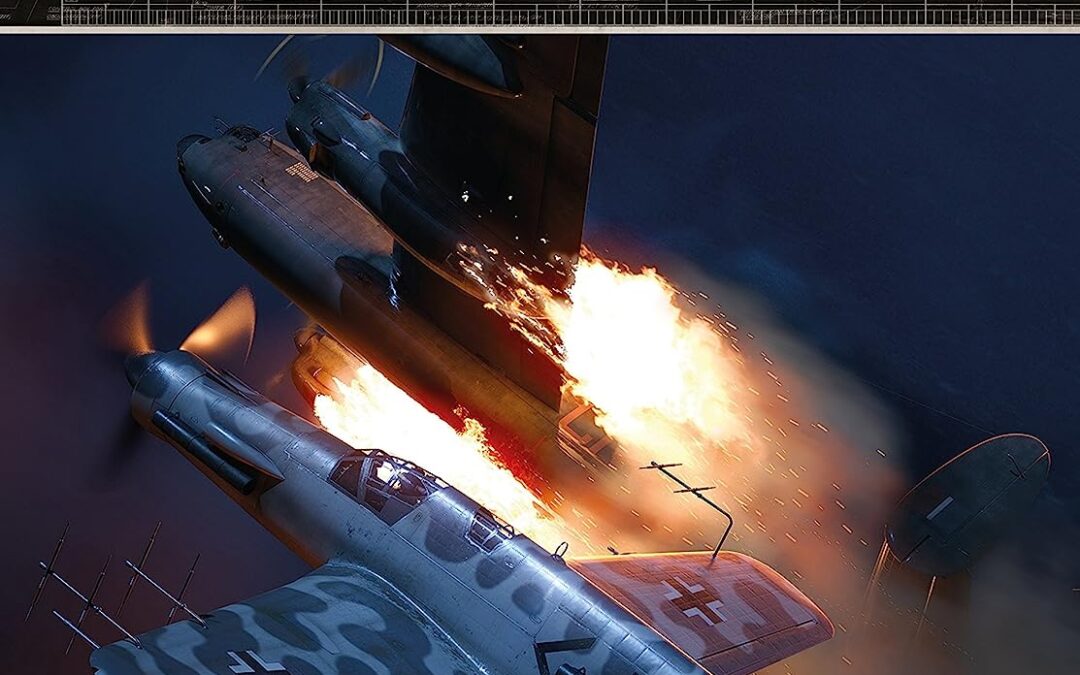
The Dornier Do 335 was conceived as a high-speed, all-weather fighter, and represented the pinnacle of piston-engined aircraft design. The Do 335 was a big aircraft, weighing just over 10,000kg when laden with fuel, equipment, and pilot, yet powered by two Daimler-Benz DB 603 engines, it was capable of reaching a maximum speed of 750km/h at 6400 meters, making it the fastest piston engine aircraft produced in Germany during World War II.
Some forty aircraft were built between late 1943 and the end of the war, and it was intended to deploy the type as a day fighter, bomber, night fighter, bad weather interceptor, and reconnaissance aircraft, all of which were intended to incorporate the latest armament, bomb sights, communications, and radar equipment, as well as an ejector seat. Featuring archive photography and specially commissioned artwork, this is the full story of the aircraft that the Luftwaffe hoped would turn the tide of the war.
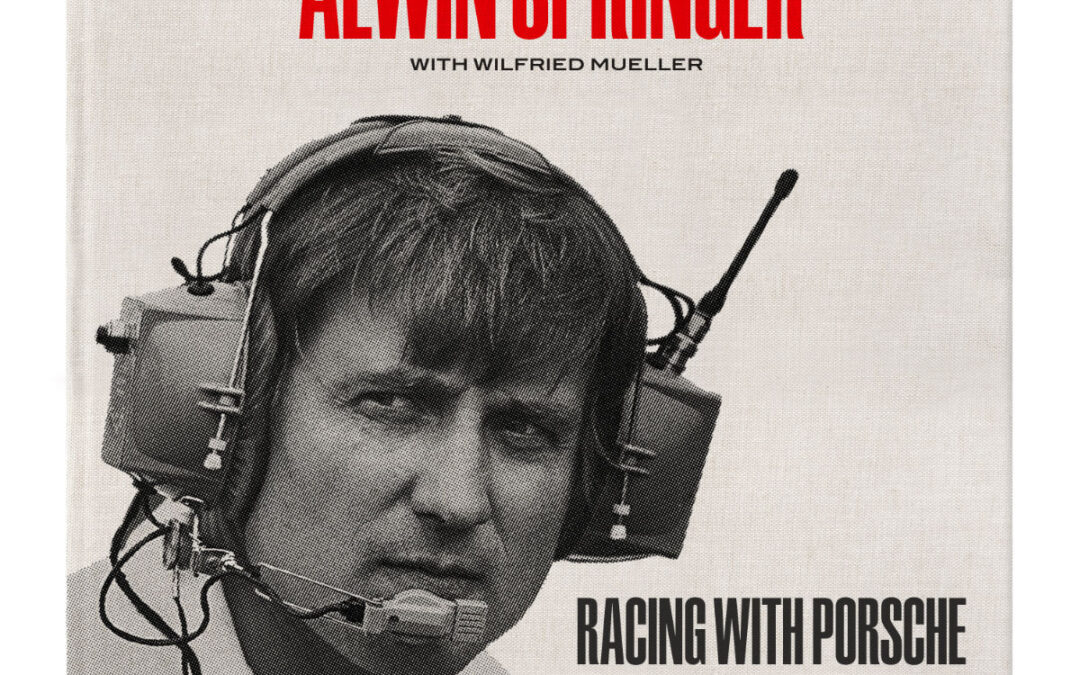
Growing up in the Ruhr area of Germany, Springer emigrated to Canada in the 1960s, but soon settled in California due to the warmer weather. There, after further improving his skills, the trained car mechanic/electrician found a job with Porsche specialist Vasek Polak and from then on looked after Polak’s Can-Am race cars as a mechanic.
Later, Springer started his own venture Andial with former Polak colleagues Arnold Wagner and Dieter Inzenhofer. The now-legendary tuning company went on to compete successfully in IMSA and, with the Andial engines, enjoyed quite a bit of success in other racing series as well. Andial became the number one address for Porsche customers in the USA, and even at Le Mans, customers of the German marque started using Andial engines. The secret of the California-based German trio: they had entrusted a capable man in Silicon Valley with the task of decoding the engine control system of the Porsche factory and thus making all parameters freely adjustable. Alwin Springer and his team perfected their set-ups in hours of test-bench runs. Morever, Springer also had a key role in the relaunch of Porsche Motorsport North America at the end of 1989 and is still active as a consultant for PMNA today.
Alwin Springer, together with Wilfried Müller, summarises his experiences from Can-Am, IMSA and the modern era at PMNA in 47 entertaining chapters, accompanied by countless photos from his private collection dating back to his early years with Vasek Polak.
Hardcover with slipcase
Limited to 963 copies, individually numbered

Porsche 356: 75th Anniversary relates the full story of Porsche’s original sports car from the first Gmund coupe to today’s beloved collector car.
Ferdinand Porsche was a brilliant engineer who, prior to World War II, had been involved in a variety of significant automotive engineering developments including the first hybrid drive vehicles. From the early 1900s, Porsche was developing racing cars including the Mercedes SSK and the mighty Auto Union Grand Prix. During this period, Porsche also developed the groundbreaking Volkswagen, which would prove critical to his postwar, namesake automobile manufacturer.
The Typ 356 was developed by Ferdinand’s son “Ferry” Porsche and introduced in 1948. Though the rear-engine layout was based on the Volkswagen, most similarities ended there. The 356 had a unique chassis, higher performing engine, and a handsome wind-cheating body. Little known outside Germany initially, by the early 1950s the 356s were lauded for their excellent handling, build quality, and growing volume of competition successes.
Porsche’s 356 evolved over its 17-year life through four distinct series: pre-A, A, B, and C, with coupes, cabriolets, Speedsters, Hardtops, and Roadsters among the many body variations. Equipped with the “Carrera” 4-cam engine, the 356 was a force in sports car racing. Dedicated competition models were developed beginning in 1953, and the Rennsport Spyders dominated road racing, endurance, and hill climb events for over a decade.
The 356 story includes a cast of fascinating characters, from those engineers who designed the cars, to race drivers who built the “giant-killer” mystique, to owners like James Dean and Janis Joplin who fell in love with the little bathtub-shaped sports cars. From titled European gentlemen in the 1950s to movie stars like Paul Newman and Steve McQueen in the 1960s, the first Porsches attracted enthusiasts and racers alike. Today, the car has an even wider following among collectors including Porsche fans like Jerry Seinfeld and Jay Leno. “356 Fascination” continues with ongoing restoration efforts, vintage racing, and an “Outlaw” movement, all enhanced by large-scale events that celebrate the car’s history.
Porsche 356 75th Anniversary tells the in-depth story and is a must-have book for anyone that loves Porsche and sports car history.
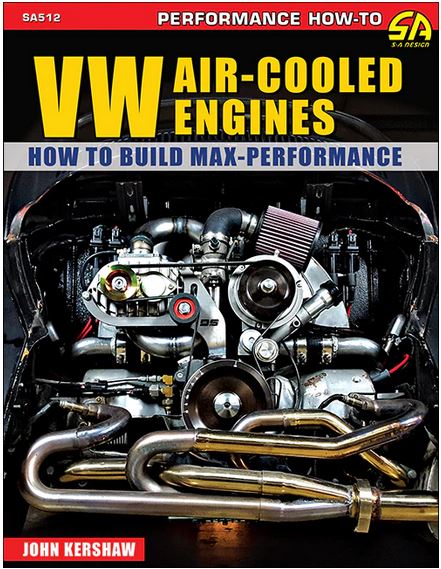
The VW Beetle (officially the Volkswagen Type 1) needs no introduction. Manufactured and marketed globally by Volkswagen from 1938 to 2003, more than 21 million were produced and sold around the world. Extremely popular in the US and Europe during the 1950s and 1960s, increasing competition from Japanese, American, and European manufacturers as well as stiffening demands for better safety and emissions contributed to a sharp decline in sales in the early 1970s. The Beetle was manufactured in much smaller numbers in Germany until the late 1970s, when production shifted to Brazil and Mexico, where operating cost was a was a large factor in keeping the Beetle alive. While simple and fun, the Beetle had simply become outdated.
Of course, the enthusiast market did not see it that way. Aficionados loved the simplicity in the design as well as its aesthetics and enjoyed tinkering with the mechanicals of their Beetles, Buses, Type 3 models and Karmann Ghias. There is no shortage of options when customizing your Beetle, and for many, extracting as much performance out of their air-cooled flat 4 was the way to go. Not only does it remedy the issue of keeping up with modern traffic but Beetles also respond really well to modifications and have a robust aftermarket to support them.
In VW Air-Cooled Engines: How to Build Max Performance, VW veteran Dr. John F. Kershaw lays the groundwork for getting the most possible power for your desired use and application. Covered here are all the various power levels and components to get you there. It’s all here: rotating assemblies, cylinder heads, cams and the valvetrain, engine blocks, ignitions systems, fuel injection, carburetors and induction, exhaust, sources for parts, and even turbos and superchargers.
Are you looking for just a little more power to keep up with traffic or maybe a streetable high-performance machine? Perhaps you are interested in a little street/strip action or even all-out racing applications. All of your options are examined in this book. Add it to your air-cooled library today.

Audi: A History of Progress chronicles the fascinating history of Audi AG, from its beginnings in Germany in 1909 to its unique place in the market today. This detailed walk through Audi’s accomplishments covers all of the company’s changes through the years. The entire Audi “family tree” is examined in detail – Wanderer, DKW, Horch, Audi A697, Auto Union, NSU – their participation in motor sports, and biographies of the people who made the company what it is today.
Building from the original edition, this new edition covers Audi AG�s history from its beginnings in Germany in 1909 to Le Mans 2000. It includes expanded coverage and dust jacket.
Audi: A History of Progress contains hundreds of rare factory photos and illustrations, presenting Audi’s past and present in a beautiful hardcover, high quality book. Whether you are an Audi owner, enthusiast or automotive historian, Audi: A History of Progress belongs on your bookshelf.

A landmark book documenting the first-ever art amusement park – launched in 1987 in Hamburg, Germany – in anticipation of its global reintroduction
In the late 1980s, more than 30 of the era’s most acclaimed artists – including Jean-Michel Basquiat, David Hockney, Roy Lichtenstein, Salvador Dalí, and Keith Haring – designed unique and fully operational fairground attractions specifically for the original park, including rides, interactive sculptures, games, performances, and music.
Each artist’s contribution is documented in photographs that show the artist at work, with details of the artworks, and showing the art in the context of the exhibition. Giving access to rare artworks that have not been widely viewed in 35 years, this book is being published for the first time in English with an updated preface.
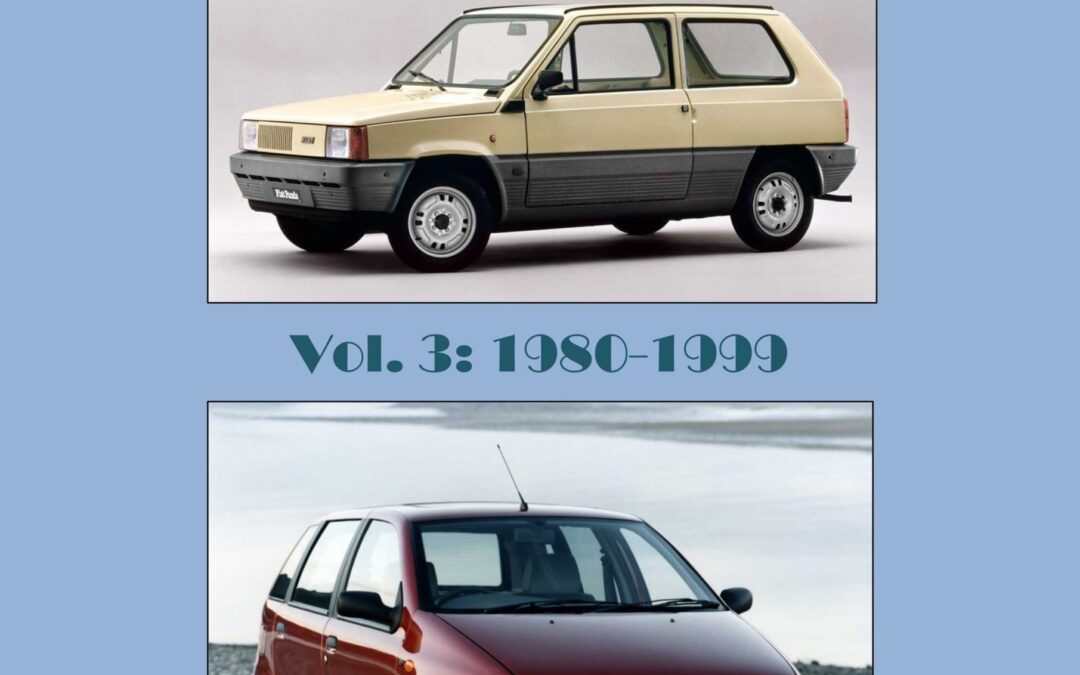
Fiat – Twenty More Years Volume 3 is the final volume on 100 years of Fiat automobiles. A4 format, soft colour covers, 125 pages with 3-4 images per page. Includes Image Credits, References, Bibliography and an Index covering all three volumes, 1899-1999.
This volume covers a period when rapid changes were taking place throughout Europe, including the collapse in 1989 of the USSR’s control of its eastern European empire, the Iron Curtain states of Poland, Hungary, Romania, Czechoslovakia, Bulgaria and the DDR – East Germany. This was almost immediately followed by the collapse of the USSR itself.
New cars were being launched by Fiat, including the iconic Panda, the Uno, Tipo, Regata, Punto, Barchetta, Coupe, Cinquecento and Seicento, Bravo and Brava, Ulysse, Palio and finally the ‘ugly duckling’ Multipla. All Fiats were now front-wheel drive, the old 131 and Argenta rear-wheel drive cars were consigned to history.
Many changes took place within Fiat itself, with Gianni Agnelli searching for a family member able to take over from him when he retired. Several family members were groomed because Gianni’s only son, Edoardo, proved to be a dilettante and incompetent. Agnelli and his Rottweiler, Cesare Romiti, faced down the powerful Italian unions in a battle for control of the company in the face of strikes and social unrest, with Fiat unable to make the numbers of cars they wanted and the quality of those cars suffering as a result of inattention by workers on assembly-line. Automation was progressed as a result, eliminating many jobs. Nevertheless, this twenty-year period produced many sought-after Fiat models which are now regarded as classics.

Celebrate more than 100 years of Germany’s best two- and four-wheeled rides. This handsome volume is filled with images, history, and in-depth review of the incredible machines BMW has created year after year.
Established in 1916, BMW is one of the automotive and motorcycle industry’s oldest and most-respected manufacturers. Over the past 100-plus years, the company has passed through myriad incarnations. The BMW Century chronicles this remarkable transportation story through the cars and motorcycles manufactured, from the 1923 R32 motorcycle to today’s sleek electric, hybrid, and high-performance cars.
The BMW Century showcases how the company’s visionary team systematically rebuilt BMW in the post-World War II years into the spectacular success we know today—a company with sales in excess of two million cars annually, led by its top-selling 3-series.
BMW’s motorcycle division is no less legendary. It began with the 1923 avant-garde R32, which featured a 180-degree, horizontally opposed twin, the engine configuration that would become BMW’s hallmark. Over the decades, BMW used that configuration to power groundbreaking machines like the R90S, R100RS, and R80GS. Beginning in 1983, the company added add three- and four-cylinder machines to their offerings, culminating in today’s spectacular S1000RR sport bike.
From the pre-war motorcycles to the iconic R-series twins of the 1970s and ’80s to the mighty M-cars and superbikes of today, The BMW Century offers a full review of German engineering at its zenith. The book is illustrated generously with hundreds of historic, contemporary, and racing photographs—many sourced from BMW’s historic archives—and thorough text covering BMW’s full history.
This is the one volume no BMW aficionado will want to be without.










